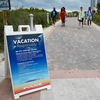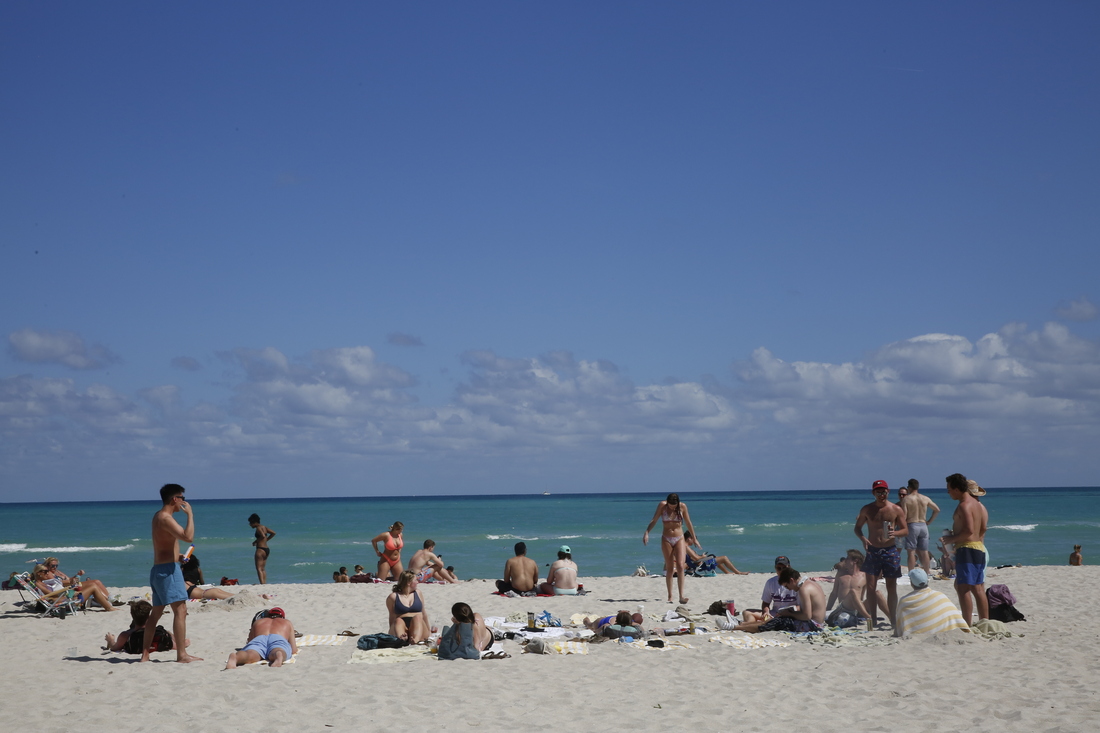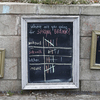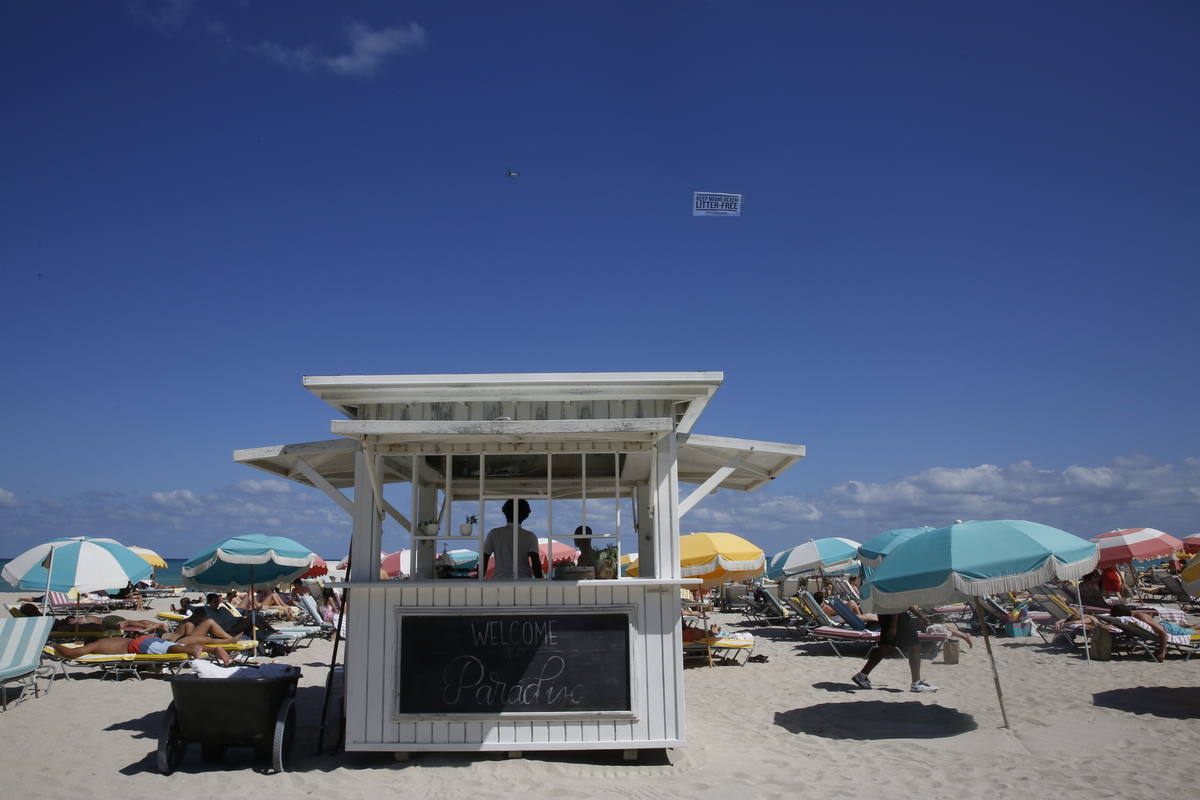Majority Of Colleges Canceled Spring Break 2021 : NPR

A majority of U.S. colleges have canceled spring break, in an attempt to curb student travel. But the rise of online classes means students can now attend college from anywhere, including Miami Beach.
Elissa Nadworny/NPR
hide caption
toggle caption
Elissa Nadworny/NPR

A majority of U.S. colleges have canceled spring break, in an attempt to curb student travel. But the rise of online classes means students can now attend college from anywhere, including Miami Beach.
Elissa Nadworny/NPR
Hoarse voices reminiscing about last night’s wild time; young people in oversized university t-shirts crowding the liquor store; a cabal of high heels waiting for ride shares, with nary a mask in sight.
Pandemic or not, it’s spring break in Miami Beach, Fla.
At a hotel restaurant overlooking the beach on Thursday, a group of students from the University of Georgia raised their cocktails to celebrate the start of the weekend. The University of Georgia is one of many colleges that decided to cancel or alter spring break — which typically happens in early or mid-March — to discourage students from travelling. But the students at the table told NPR they chose to make their own spring break. Several had online classes and exams earlier that day, which they attended from their hotel rooms. It’s a story NPR heard over and over again from spring breakers along Collins Avenue, Miami Beach’s main drag.
According to new research from the College Crisis Initiative at Davidson College, about 60% of colleges have done away with spring break this year. Many campuses are instead offering smaller, shorter breaks or wellness days. Of the more than 600 colleges offering alternative breaks, scheduling days off mid-week was the most common option, likely an attempt to curb travel away from campus, and ultimately keep coronavirus cases down.

But these campus health efforts have hit a major roadblock: The rise of online classes means students can now do college from anywhere — even next to a pool with palm trees gently swaying in the background.
“You can make all of the rules and tell students to stay on campus, but at the end of the day, they’re going to do what they want to do,” says Daniel Mangrum, an economist who has studied the connection between last year’s spring break and the spread of COVID-19. Mangrum found that student travel in March 2020 was associated with the virus spreading more on campuses and in nearby communities. It was also associated with higher mortality rates.

Students vacationing in Miami Beach told NPR they decided to travel despite their colleges cancelling spring break. Many are still attending online classes and taking exams from their hotel rooms.
Elissa Nadworny/NPR
hide caption
toggle caption
Elissa Nadworny/NPR

Students vacationing in Miami Beach told NPR they decided to travel despite their colleges cancelling spring break. Many are still attending online classes and taking exams from their hotel rooms.
Elissa Nadworny/NPR
“The riskier destinations correlated with worse outcomes,” explains Mangrum. Using anonymous smartphone data, he and his co-author, Paul Niekamp, found higher rates of positive cases at and around colleges where students had either travelled by plane or visited New York City or Florida.
A year later, many colleges are urging students not to travel at all for spring break. At the University of California, Davis, administrators offered students $75 “staycation” grants to help curb travel. The grant was made available to 2,500 students. Currently, nearly 6,000 students live in on-campus housing, though many more live off-campus in the city of Davis.
“Paying students is probably the perfect route to go,” says Mangrum. “If you can change their cost benefit analysis to make it so it’s a little bit better for them to stay on campus, then maybe you can affect their decisions.”
For students who decide to travel anyway, the traditional spring break rituals can come with increased risk, especially when not everyone is wearing masks. Gathering outside on a beach is safer, in principle, when it comes to mitigating the spread of the coronavirus, but it can become dangerous when people are packed in close together. Sharing hotel rooms and spending time in crowded indoor spaces — like bars and clubs — also gives the virus more opportunities to spread. Masks can offer a layer of protection, but in the course of NPR’s reporting from Miami Beach, masks appeared on visitors’ chins and in pockets more often than on their faces.

Miami-Dade County was already experiencing high levels of community spread before students descended, with a test positivity rate of 10%. The Centers for Disease Control and Prevention continues to recommend avoiding travel, and even the mayor of Miami Beach, Dan Gelber, has expressed concern about spring breakers bringing COVID-19 to his city.
“I don’t want to be a superspreader,” he told NPR earlier this month. His message for travelers: “If you’re coming here to do anything and you think this is an anything-goes place, just don’t come here. Please go somewhere else.”
Despite that, the city is busy: Projected hotel occupancy for the month of March is at 72% capacity and home shares are up by 27% from their 2019 pre-pandemic numbers, according to the Greater Miami Convention & Visitors Bureau.
Of course spring break isn’t always about a beach vacation. For many students, it’s a reset, a time to decompress around midterms. And some students aren’t too pleased to give that up. San Diego State University freshman Khanitha Bryant, who sometimes goes by Khanitha Soeung, started a petition to restore spring break at her school.
“When I’m fighting for spring break for the students, I’m not doing it for the students who are using it to go party and all that,” she says. “I’m here for students who genuinely need like that one week break to just take a mental health breather, to go to their doctors appointments, to take care of their kids or family.”

In the course of NPR’s reporting from Miami Beach, masks appeared on visitors’ chins and in pockets more often than on their faces.
Elissa Nadworny/NPR
hide caption
toggle caption
Elissa Nadworny/NPR

In the course of NPR’s reporting from Miami Beach, masks appeared on visitors’ chins and in pockets more often than on their faces.
Elissa Nadworny/NPR
Bryant created an anonymous google form for fellow students to explain why they needed a spring break. She heard from students who planned to use the week to work extra hours to offset the rest of the semester; students who needed time for doctors appointments or to take care of family members; and international students taking classes overnight, who were hoping to actually keep some normal hours and see their families and friends for a few days.
“They just need a break,” Bryant says. And she does too.
“I feel burnt out. I’m tired. I don’t have the motivation to finish the rest of the semester,” she says. “I almost changed my major because I was like, I can’t do this for another year.” Despite the petition, San Diego State stuck with its decision to cancel spring break and replace it with four “rest and recovery” days.
Hannah Varkey counts herself among the lucky students who do get a spring break, one she is very much looking forward to. She’s a senior studying cognitive science at Rutgers University–New Brunswick, and she plans to stay on campus for the week. “I’ll definitely go for walks, catch up on sleep, catch up doing all my homework,” she says. She’s hoping she might even have time to read a little poetry. Is she worried about her classmates traveling and partying and bringing the coronavirus back to campus?
“Definitely,” she says. And when they do, “We’ll see it on Instagram.”
Lauren Migaki contributed to this report.
